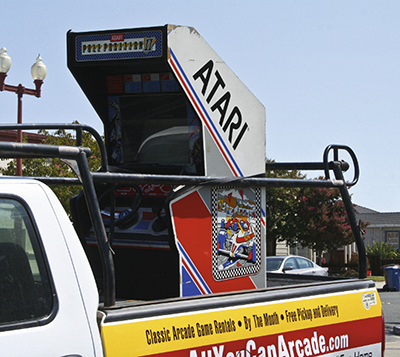Seth Peterson and his company, All You Can Arcade, are restoring classic arcade games - and more than a few forgotten gems - back to their former glory, writes Simon Liddle.

TECHNOLOGY has undoubtedly transformed the video gaming experience; there are smartphone games that make once cutting-edge arcade games appear ludicrously primitive by comparison. Yet, while today’s arcade and home console games are undoubtedly technologically more advanced than their predecessors, questions remain about their longevity.
The golden generation of video arcade games – among which we can list Donkey Kong and Ms Pac-Man – have become iconic titles, often revamped, repackaged and transported beyond the boundaries of coin-op. They are now - and will forever be - synonymous with this form of entertainment. Many of these original pioneering video titles are in the hands of collectors, such is their nostalgic appeal. It is reassuring to learn, however, that not only is there a home for old arcade games, but there’s also a thriving community of gaming enthusiasts willing to pay to play them.
Earlier this year, a California start-up called All You Can Arcade hit the headlines and its business of sourcing, restoring and renting popular arcade games from the ’80s and ’90s immediately struck a chord with gamers.
“My background is in finance, but about two years ago I purchased my first arcade machine and it didn’t take long before I set out to try and monetise the purchase,” Seth Peterson, the company’s co-founder and CEO, told InterGame. “One of the things that I loved about the games is that they were the ultimate micro-business. You didn’t need hundreds of thousands of dollars to start earning income, just a single game and a good location to put it in. This makes the amusement industry accessible to a lot of people who would be shut out otherwise.
“In a world where big companies almost always have the advantage over smaller competitors, there was something very appealing about working in an industry where smaller is often better.”
Read the full article in the October issue of InterGame.

